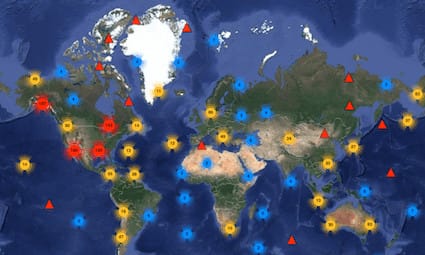
stationmonitor
Did the Ground Move Near Me?
![]()



![]()



Thank you Station Hosts!
This will relax distance and magnitude filters and also reduce the signal to noise ratio threshold for an event to be listed. As a result, the list will show more potential events recorded by selected station. Some events listed will not be visible on the chart.
Channel selection will persist during a session in Webicorder and Event view. You can hover over the station name in the title and get the tooltip of channel. Channel selection is remembered during the session for each individual station.
Filtering seismic station data makes it possible to enhance the visibility of earthquakes that might otherwise be obscured by seismic signals in other frequency bands. The options are to:
By regularly monitoring one or more stations maybe will learn how to detect these non-earthquake sources! To get started, view this this video.
Love what you see? Have ideas to make it better? We love to hear feedback from users! Feedback/Feature Request
The Station Monitor lists only stations that are part of _REALTIME virtual network and when station metadata, maintained by the station operator, indicate data availability on BH?, SH?, HH?, EH?, EN?, HN?, LH? and VH? channels for the selected time period. Stations in the _REALTIME network are added/removed daily based upon station information and data availability.